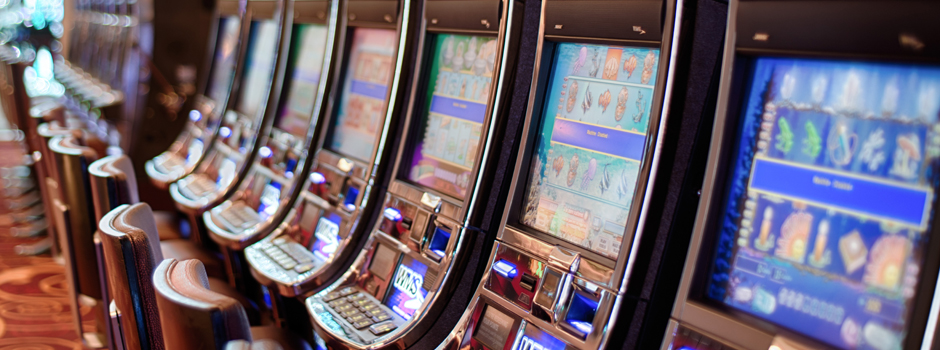[Adapted from a document originally produced by Survivors of Abuse Recovering (S.O.A.R.) Society]

This is only supportable if one takes a “silo” approach to funding. While there is an obvious increase in the revenue to government from these devices, this is more than offset by the social costs. Not only are there extra costs to Social Services and Department of Health in assisting families to deal with the impacts of gambling, and to the Justice Department for response to embezzlement, etc., but the wider costs to the community are significant (for example, see The Costs and Benefits of Gaming: A Literature Review with Emphasis on Nova Scotia for a detailed cost accounting by GPI Atlantic, funded by the Nova Scotia Gaming Foundation).
Research shows that the neurochemical changes that occur in the brains of gambling addicts are the same as in people who are addicted to substances (for further information, “Behavioral and neurochemical commonalities in addiction” in Contemporary Family Therapy, Vol. 13, #5).
Firstly, it has been known for a long time that there is no support in scientific literature for the concept of an “addictive personality” (the following excerpt is from Scientific American, November 1997: “Scientists realize that addictions stem from much more than ‘an addictive personality’ or weak will. The remedies being tested actually target the cascade of neurochemical events at the root of addicts’ cravings”). There are risk factors and protective factors that influence behaviour and outcomes, but these cut across all strata of society. Secondly, and perhaps more importantly, electronic gambling devices are designed based on a deep understanding of human psychology and how to manipulate human behaviour. The psychological principles (such as a variable-ratio reward system) work on all humans as the designers of the machines capitalize on understanding how the brain functions and how motivation and behaviour can be guided. This is done with no disclosure to the public as to the techniques used so that citizens are unable to make an informed choice about their involvement with these devices.
The government program of introducing VLTs into bars and other licensed establishments ends up creating a dependency of the business on these devices, leading them to rely on a business plan/model that is not viable without gambling devices. We need to provide assistance to businesses to restructure their services so that they return to viability without having to use devices that harm their patrons. See our downloadable workshop for businesses to learn how to shift revenue streams to a less risky income. (Made in collaboration with the Acadia Entrepreneurship Centre.)
Gambling revenues are effectively a tax on the poor and vulnerable. “The regressive nature of gambling [revenue] is no secret: research both within Canada and internationally has consistently found that poor households spend a greater percentage of their income on gambling than their wealthier neighbours do. And yet this is exactly the opposite of how other tax revenue functions.” (Cardus). A government needs to set the tax rate appropriately to fund its programs. Gambling revenues are a smokescreen to fool the public into thinking that their tax rates are lower than they are. We often hear that cutting electronic gambling will cut into health care and cultural programming. This is nonsense. There are many excesses in the provincial budget that could be cut.
The euphemism “gaming,” used to describe gambling, inappropriately implies that these activities are entertaining apart from the gambling component. But how long would anyone play a game where they had to press a button over and over to see if pictures end up in a row, if there were no money involved? Perhaps it would keep a five-year-old occupied for ten minutes, but no adult would play such a “game.” There is zero entertainment value to these games apart from the brain-chemistry-altering function of engaging in the risk of gambling. Repetition of this behaviour increases the risk of dependency for all people. Corner-store workers have described customers who purchase scratch tickets and only scratch the bar code for scanning to see if they won. There is no game! Nothing that you can do can change the chance of winning, so why “play”? The product is based on deception.
One of the greatest problems is that the regulator of gambling is the same as the entity who benefits financially from it (that is to say, the government). This is a clear conflict of interest. There needs to be an arms-length organization with the power to regulate. A previous Finance Minister stated that he would “consider anything” to bring money into the provincial coffers. Is this the attitude we need from a regulator?
It is important to limit exposure of children to these machines. However, does it really make sense to locate addictive gambling machines in places where people are drinking? The first impact of consuming alcohol is to impair judgement. This environment increases the risk factors for those using the machines.
Now that there are so many online portals to gambling, children are at increased risk. Also, the “gamblification of gaming” means that many video games that children use incorporate gambling activities and can “normalize” gambling for youth, as well as causing direct financial harm. We need to slow down or stop the increase in these portals (e.g. see Stop the ALC Online Casino in NS.)

